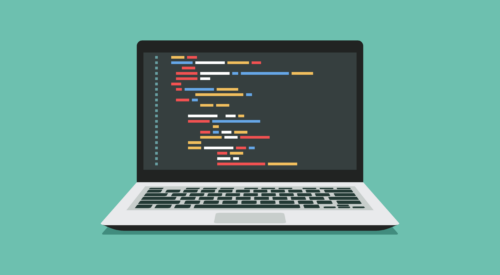
From Punched Cards to Prompts
AndroidIntroduction When computer programming was young, code was punched into cards. That is, holes were punched into a piece of cardboard in a format...
Wearables are becoming ubiquitous. Every day, it feels like there’s some new fitness tracker with a slightly different set of sensors and an entirely new app/API/website/life-changing-experience/yet-another-account-to-set-up. And fitness trackers are only the most popular bastion of wearable computing. Once you start counting the many devices that used to be released as a USB peripheral and are now being updated to use Bluetooth Low Energy and a rechargeable battery, the list of wearables becomes even larger than the number of Android devices available.
Though I would argue that we aren’t extactly sure where the definition of the term begins and ends, a wearable can be loosely defined as a device that the user interacts with fully inside his or her personal space. Fitness trackers, smart glasses, smartphones, gesture detectors and smart watches all fit into this definition. With the many wearable devices available, the wearable ecosystem is becoming incredibly fragmented, on an order of magnitude more than we ever dealt with during the PC era. Forbes observed this trend towards fragmentation way back in November of last year, and since then, many more devices have been released.
Defining wearable computing is not only a fun philosophical debate (e.g., If I strap a Furby to my head, is it then a wearable, kid-friendly interface for Furbish?), but it’s also pertinent to solving this fragmentation. We need a broad enough abstraction to cover all of these different devices that yet is specific enough to leave us within a realistic and implementable realm.
To add to the complication, wearables are just a small subset of the wider Internet of Things. We’ve got all of these devices strewn about our lives that are IP-addressible, or that can otherwise be controlled via web-calls to an API somewhere. My lightbulbs, door locks, speakers, car, refrigerator and thermostats are all accessible through my phone right now—and those are just my personal “Things.”
So now that I’ve got all these Things everywhere in my life, and I’m wearing 12 different CPUs on my body while keeping everything charged and connected to the internet, it really bothers me that I can’t actually use them together in unison without going to great lengths—and I’m a software developer. For someone who isn’t a developer, it’s basically impossible to rig a single button on a smartphone to both turn off the lights and lock the door. Furthermore, even with Apple’s HomeKit, Android users like me are left in the dark, with little hope of a vendor-agnostic update to the protocol.
What we need is an open standard protocol: a way for a device to publish what it can do and who can trigger it, and a way for a wearable to share events and commands it gleans from the environment without having to explicitly connect or pair devices. While Bluetooth LE gets us part of the way there by making pairing a thing of the past and by reading properties out of thin air, every device has its own unique set of properties, doing us no good beyond the Personal Area Network.
We need a new TCP over IP: The Things communication protocol—a standardized set of properties, a way of syncing properties over IP and PANs, and a way of replicating and modifying properties to the cloud and on device.
This protocol should have a large list of generic properties that could be implemented: brightness, hue, open/closed state, temperature, ready/not ready, capacity, humidity, power, GPS location, room placement and other physical properties—the list goes on and on. Things would not have to know about all properties, just the ones the device chooses to implement. Properties beyond the basics would come about organically as new device manufacturers declare them.
Wearables or other input devices would declare their own set of properties (once again up to the creator) such as gestures, distance, counters and sensor readings. Devices should be responsible for publishing properties in some fashion, either locally over Bluetooth LE to be distributed by another device, or directly to a wider web service. Ideally, this property directory would allow for easy creation of decentralized replicas, using a consensus algorithm that allows heavy users to set up an on-site directory server to minimize latency. Authentication would be the responsibility of the directories instead of the individual devices, including allowing the replication of a subset of properties.
Once we had this information in the form of properties freely flowing around the Weariverse, acting on them would become simple. A light switch on the wall could simply manipulate the on/off state of a certain group of properties, while a phone app could replicate and expose all properties of a set of lights. Apps that handle event-driven automation could live in the cloud, subscribing to relevant properties and firing off changes when events come in: for example, opening your front door could trigger turning on lights and music inside your house.
There are, of course, services like If This Then That and OpenHAB that are very similar to what I have described, but using them requires a trade-off between configurability and ease of use. OpenHAB is intimidating for the average user: It requires modifying a series of text files in various folders and installation as a server on a computer that stays on within your Local Area Network—far beyond a typical user’s skillset. IFTTT is incredibly simple to use and can be manipulated via drag-and-drop units in a web browser or mobile app, but this interface severely limits conditionals, state, and multi-device actions. That said, OpenHAB is an active open-source project, and a more user-friendly configuration system is being built.
I believe that just like the iPhone was the tipping point for the PDA, we are nearing the tipping point of the Weariverse. But first, we must tackle these kinds of problems if we want to bring wearable computing and the Internet of Things to the general consumer. These projects are taking steps towards forming a cohesive Weariverse, and if you already have some of these devices in your life, I encourage you try them out.

Introduction When computer programming was young, code was punched into cards. That is, holes were punched into a piece of cardboard in a format...

Jetpack Compose is a declarative framework for building native Android UI recommended by Google. To simplify and accelerate UI development, the framework turns the...

Big Nerd Ranch is chock-full of incredibly talented people. Today, we’re starting a series, Tell Our BNR Story, where folks within our industry share...